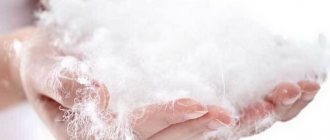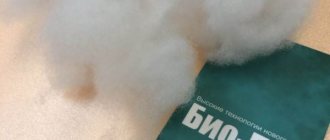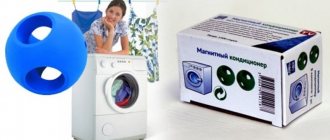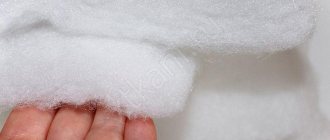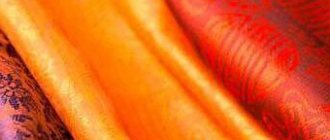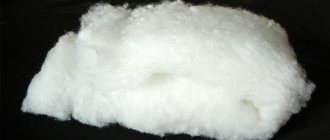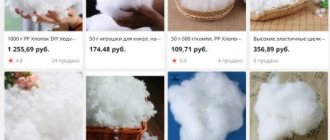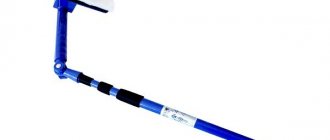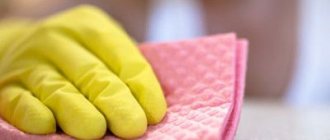If you purchased an item with Bio-down by accident, take a look at this article to know what you are dealing with. If you bought a product with this filler deliberately, then you already know how good this filler is at what it does. All that remains is to consolidate in memory and in practice how to care for Bio-down and enjoy these comfortable things without fear of spoiling them when cleaning.
Author of the article: Hostess.
My name is Natalya and I have been managing my home professionally for more than 15 years. Saving my extended family's favorite things; I protect our house from fleas, midges, bloodsuckers and other rodents; I find faithful electronic assistants in household chores. And I am happy to pass on this entire experience to you)
Do you also want to become a Hostess on our blog? There's enough room for everyone! Just write to us via the “contact” form)
We would have to tinker with natural feathers or down: every now and then it tries to get out of the down jacket or pillow, but what are we doing? Right! We pull it out and over time things become thinner. And when washed, the natural filler clumps, sticks together and slowly rots, like any other natural material. I am silent about the fact that such things take 2-3 days to dry and then are not easy to straighten. But with Bio-down the story is completely different: easy washing, quick drying. Here's a look at how easy and quick it is to wash a jacket or pillow with Bio-down.
Bio-down care
Machine washable.
One of the main advantages of this filler is its ease of care. Bio-down can be easily washed in a washing machine, just like Eco-fur. It would have been difficult with natural analogues of both materials, but, thanks to the manufacturers, they thought about how to make caring for Bio-down easy and simple: throw it in, press the right buttons and go about your business. Here's how to do it:
- ✧ First , read the care label on the product itself. Manufacturers give us hints.
- ✧ Don’t forget to take everything out of your pockets, fasten all fasteners, and turn your clothes inside out.
- ✧ It is better to lightly wash especially dirty places (hem, cuffs, collar) or stains before washing in the machine to be sure that everything will be washed and you will not have to rewash.
- ✧ You need to wash at a temperature of 30-40 C, no higher, preferably in a delicate wash mode. or "sport".
- ✧ Use liquid detergents: they dissolve better in water, penetrate into the fibers, cleansing them, and are washed out well.
- ✧ Do not use aggressive bleaches, they can damage the structure of the fabric itself and the polymer fiber inside.
- ✧ If you have winter clothes made of special materials, buy special detergents.
- ✧ If you use powder or fabric softener, turn on an extra rinse so that no soapy streaks remain.
- ✧ Normal spin – 800-1000 rpm. More on drying below.
May be useful:
Do-it-yourself natural washing powder: effective, cheap, safe.
Advantages and disadvantages of insulation
Bio-fluff is one of the very first biological-based fillers. The material has a three-dimensional spherical structure, similar to natural down. It is distinguished by its elasticity and pleasant softness to the touch. When dry, the insulation resists compression and quickly regains its shape. The composition and structure of the material lead to the following advantages:
- Effective heat conservation. The filler is able to protect from frost down to -35-40 degrees;
- Preservation of its properties and shape. The insulation does not lose shape, thickness and volume, does not pass through seams and upper material, and does not deform;
- Easy to care for. Eco-down is washable both by hand and in a machine, it dries within a few hours and does not pill;
- Light weight, things with insulation do not hinder movement;
- The material is hypoallergenic and does not irritate the skin;
- Bio-down is moisture resistant, does not suffer from proper storage, and is not affected by mold and fungi;
- Durability and wear resistance.
Bio-fluff also has a number of disadvantages:
- Static electricity may accumulate in the material;
- Not resistant to high temperatures and open fire;
- Poorly removes water from the body.
How to wash bio-down by hand?
Not all things fit into the washing machine and a long coat with bio-down will have to be washed by hand. And not everyone has it.
It's not difficult, look here:
- Fill a bathtub or large basin with warm water 30-40C.
- Dilute the liquid detergent and whisk the water with your hand until foam appears.
- Immerse the item in water and press down until it is completely wet.
- Leave the item for half an hour.
- Afterwards, wash the dirtiest places first (bottom, cuffs, collar), and then lightly “remember” the entire product. Do not be too zealous so as not to squeeze the filler inside once again.
- You need to rinse with plenty of water until all the soap is gone. Several procedures will be required, because all fillers absorb soapy water well and you need to try to wash it completely.
If you don’t have a washing machine and don’t want to bother with hand washing, take the item to the dry cleaner.
in the middle of the article
Bio-down protects heat and animals.
Bio-fluff appeared in the 70s, thanks to one unfortunate technological mistake that was made during the production of biopolymers. However, the owners were not at a loss and very far-sightedly adopted the new development, immediately patenting it (“DuPont” and “Sorona”). The future Bio-fluff was improved and began to be used by two world-famous companies: DuPont and Thinsulate.
By the way, the latter is in the production of a very thin but warm material “Thinsulate” , which has long won the hearts of everyone who lives in northern latitudes (including mine!). I mean, this is a kind of guarantee of a quality mark from a company that knows in practice what a really warm synthetic material is)
.
Bio-fluff immediately carried out successful tests, going to the North Pole in the clothes of polar explorers. To this day, this eco-insulation material is widely used in the production of winter clothing and equipment (for example, sleeping bags).

